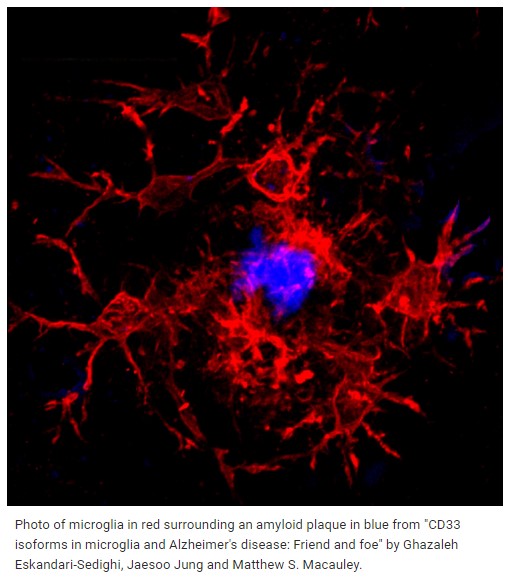A study involving DoM's Dr. Jason Plemel and Dr. Valerie Sim yields significant insight into Alzheimer’s Disease
28 August 2024

By Donna McKinnon, Faculty of Science News
In the Dementia Canada: Economic Burden report, issued in 2022 by the Canadian Centre for Economic Analysis, the total annual economic burden of dementia in Canada is estimated to be $40 billion. If the current trend holds, this burden could grow by 275 per cent over the next 30 years. Delaying the onset of dementia by one, five, or 10 years would reduce the annual burden in 2050 by 10, 42, and 70 per cent, respectively.
Under the umbrella of dementia, Alzheimer's Disease (AD) is the most common form of neurodegenerative disease. While environmental factors play a role, approximately 70 per cent of AD risk is attributable to genetics.
A new study led by Ghazaleh Eskandari-Sedighi, a postdoctoral researcher, and Matthew Macauley in the Department of Chemistry, have shown that CD33, a protein receptor on the surface of microglia (the brain’s immune cells) do not just skew susceptibility to the development of AD in mice, but in its shorter isoform, may also serve as protection against the disease.
Understanding these opposing susceptibility factors is a step toward the development of therapeutic interventions.
The paradox of human CD33
One of the most significant revolutions in the study of complex diseases like Parkinson’s and Alzheimer's, explains Eskandari-Sedighi, is the development of genome-wide association studies (GWAS), which collect and compare millions of complete sets of DNA to find genetic variations and trends associated with particular diseases.
“GWAS hits are like diamonds,” she says. “You dig deep, and when you find something meaningful, you focus on it. CD33 was one of those hits.”
Microglia are crucial for modulating cognition, memory, behaviour, gene expression, and other neurological functions. CD33, an immunomodulatory receptor on the surface of microglia, helps immune cells interact with disease pathogens. Along with APOE e4, it is considered a top-ranked driver in the development of AD, but as their study shows, CD33 in its long isoform (CD33M) and short isoform (CD33m) have dramatic and opposing effects on the development of AD.
The research was, by necessity, cross-disciplinary — spanning the faculties of Science and Medicine & Dentistry with experts in single cell transcriptomics (Jason Plemel), proteomics (Oliver Julien), neurology and behaviour (Qiumin Tan), and biochemistry (Valerie Sim).